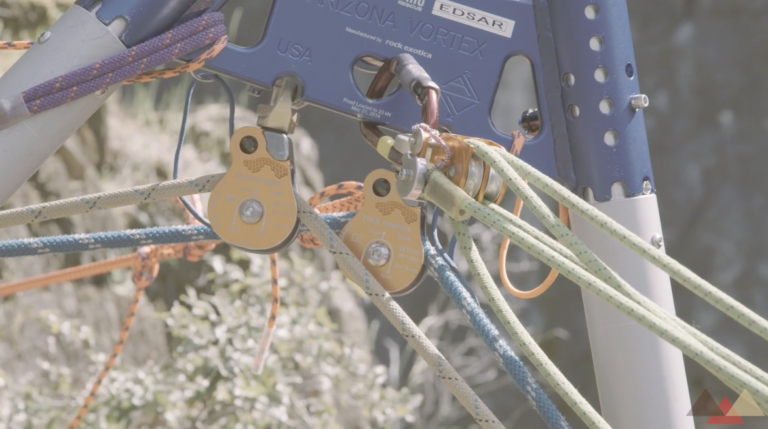Implementing Dual Artificial High Directional Systems for Trackline Offsets
Implementing dual Artificial High Directional (AHD) systems for trackline offsets represents a significant leap forward in technical rescue operations. This innovative approach, integrating Two-Tension Rope Systems (TTRS) and strategic trackline setups, enhances safety, efficiency, and adaptability in complex rescue scenarios. By combining advanced rigging techniques with meticulous planning, rescue teams can tackle even the most challenging environments with confidence and precision.
Key Components of the Dual AHD System
The dual AHD system involves a sophisticated configuration of equipment and strategies designed to maximize operational effectiveness:
- Two-Tension Rope System (TTRS):
- Provides redundancy, enhancing safety.
- Ensures balanced load distribution across two ropes.
- Reduces rope stretch, maintaining system stability.
- Single Tracking Line:
- Simplifies control during descent and ascent.
- Keeps the patient within one meter of the cliff face to minimize tension.
- Offers precise movement for efficient rescues.
- Separate AHD Configurations:
- SA Frame: Supports the TTRS working lines.
- Monopod/Gin Pole: Dedicated to the tracking line, improving system versatility.
Operational Considerations for Dual AHD Systems
Implementing dual AHD systems requires careful planning and flawless execution. Key considerations include:
- Strategic Setup:
- Select optimal working areas for both AHD systems.
- Coordinate operations between top-side and bottom-side teams for efficiency.
- AHD Angle Optimization:
- Critical for safety and operational effectiveness.
- Directly influences load distribution and system performance.
- Guying Techniques:
- Properly angled guy lines stabilize the AHD systems.
- Essential for ensuring smooth and controlled operations.
- Team Communication:
- Clear and continuous dialogue between physically separated teams is vital.
- Synchronization enhances efficiency and reduces risks during complex maneuvers.
Benefits of Dual AHD Systems
This advanced approach offers numerous advantages for rescue teams:
- Enhanced Safety: Redundancy in TTRS minimizes system risks.
- Improved Efficiency: Simplified control and precise movements optimize operations.
- Adaptability: Versatile configurations suit a wide range of challenging rescue scenarios.
- Reduced Tension: Keeping the patient close to the cliff face decreases system stress and strain.
Challenges in Dual AHD Implementation
Despite its benefits, the implementation of dual AHD systems is not without challenges:
- Complexity: The system requires meticulous planning and setup.
- Communication: Teams must maintain impeccable coordination despite physical separation.
- Training: Rescuers must acquire specialized skills to operate the system effectively.
Conclusion
Implementing dual Artificial High Directional systems for trackline offsets demonstrates the continuous evolution of technical rescue techniques. By integrating Two-Tension Rope Systems, optimizing AHD configurations, and fostering synchronized team communication, rescue teams can significantly enhance their capabilities. This approach highlights the importance of adaptability, precision, and strategic planning in modern rescue operations.
For advanced training on dual AHD systems and other high-angle rescue techniques, explore Rigging Lab Academy. Equip your team with the latest tools and gear at Rescue Response Gear.
Peace on your Days
Lance









